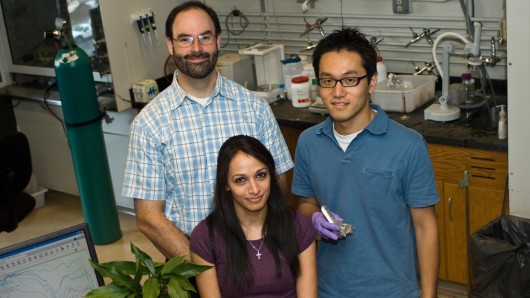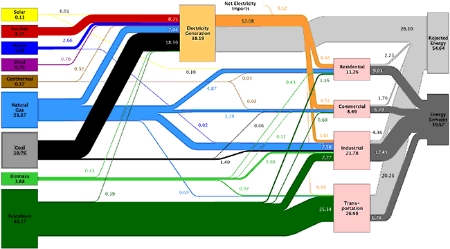Wednesday, September 8, 2010, 11:47 AM
Posted by Administrator
Posted by Administrator

Associate Professor Michael Strano (left) with graduate student Ardemis Boghossian and postdoctoral fellow Moon-Ho Ham, in one of the labs where they and their team developed the self-repairing PV technology (Image: Patrick Gillooly)
It has been a while since my last post. I have been busy with site walks, vacation (needed), and communications regarding the district solar project. The pace will pick up again very soon. We are now in the process of evaluating the proposals set forth by the participants.
On the same subject, solar power, there has been some technology news. In the above photo you can see the people directly involved with a breakthrough that may someday change solar power for everyone. Self repairing solar panels may become a reality thanks to their hard work.
A very significant problem with solar panels is the breakdown of the material over time. As panels age, they simply don't work as well. If the material were to "self repair" the efficiency would theoretically be the same forever.
Another big step will be self cleaning features. Solar panels produce the most when the light can hit them directly. If there is a layer of dust, the production drops significantly. Large installations like the one we will be installing will have a cleaning and maintenance contract built in to the cost and return on investment model.
For more information on the new breakthrough, follow the related link below.



 Calendar
Calendar




